Why You Must Visit Camp des Milles in Aix-en-Provence
7 min readOne of the most impactful parts of our South of France trip was when we visited Camp des Milles, just outside of Aix-en-Provence and Marseille. Camp des Milles was a...
The post Why You Must Visit Camp des Milles in Aix-en-Provence appeared first on Teaspoon of Adventure.
One of the most impactful parts of our South of France trip was when we visited Camp des Milles, just outside of Aix-en-Provence and Marseille.
Camp des Milles was a French internment and deportation camp during WWII. It’s the largest camp in France that is still in tact and open to the public.
My husband, Colin, and I have visited a few places that share the hard stories from World War II, like Anne Frank’s House in Amsterdam and Dachau outside of Munich. While I wouldn’t consider us dark tourism fans, we do think it’s important to learn about the history of these places and honour the lives lost.
It sounds wrong to say we were excited to go to Camp des Milles, but we were looking forward to learning more about the site. It ended up being one of the most meaningful stops on our trip and I highly recommend adding Camp des Milles to your Provence itinerary.
Below I’ll share a little bit more about Camp des Milles, what you need to know to visit and reflect on our experience.
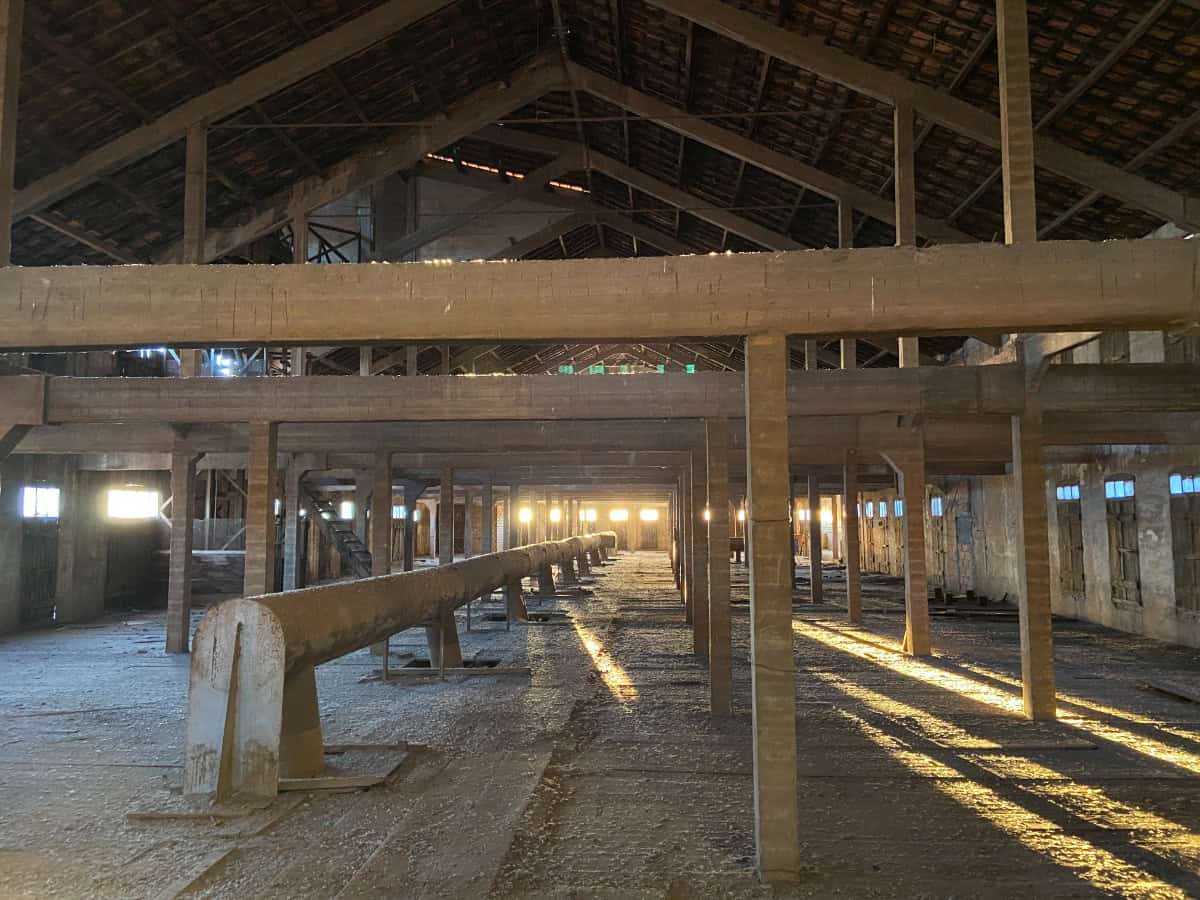
Disclosure: Some of the links below are affiliate links, meaning if you click through and make a purchase, I will earn a small commission at no additional cost to you. Thanks for your support!
History of Camp des Milles
Camp des Milles started out as a tile factory, but was closed in the 1930’s due to an economic recession.
By 1939, it was being used as an internment camp, but not for Jewish people. From 1939-1940, Camp des Milles actually interned Germans and Austrians who were considered “enemy subjects.”
However, the tables turned from 1940-1942. After France was invaded, Camp des Milles was used to intern Jewish people as France’s Vichy government was working with Hitler’s Nazi party.
Lastly, in the late summer of 1942, Camp des Milles was used as a deportation camp. Over 10,000 people were interned with 2,000 Jews being deported to Auschwitz.
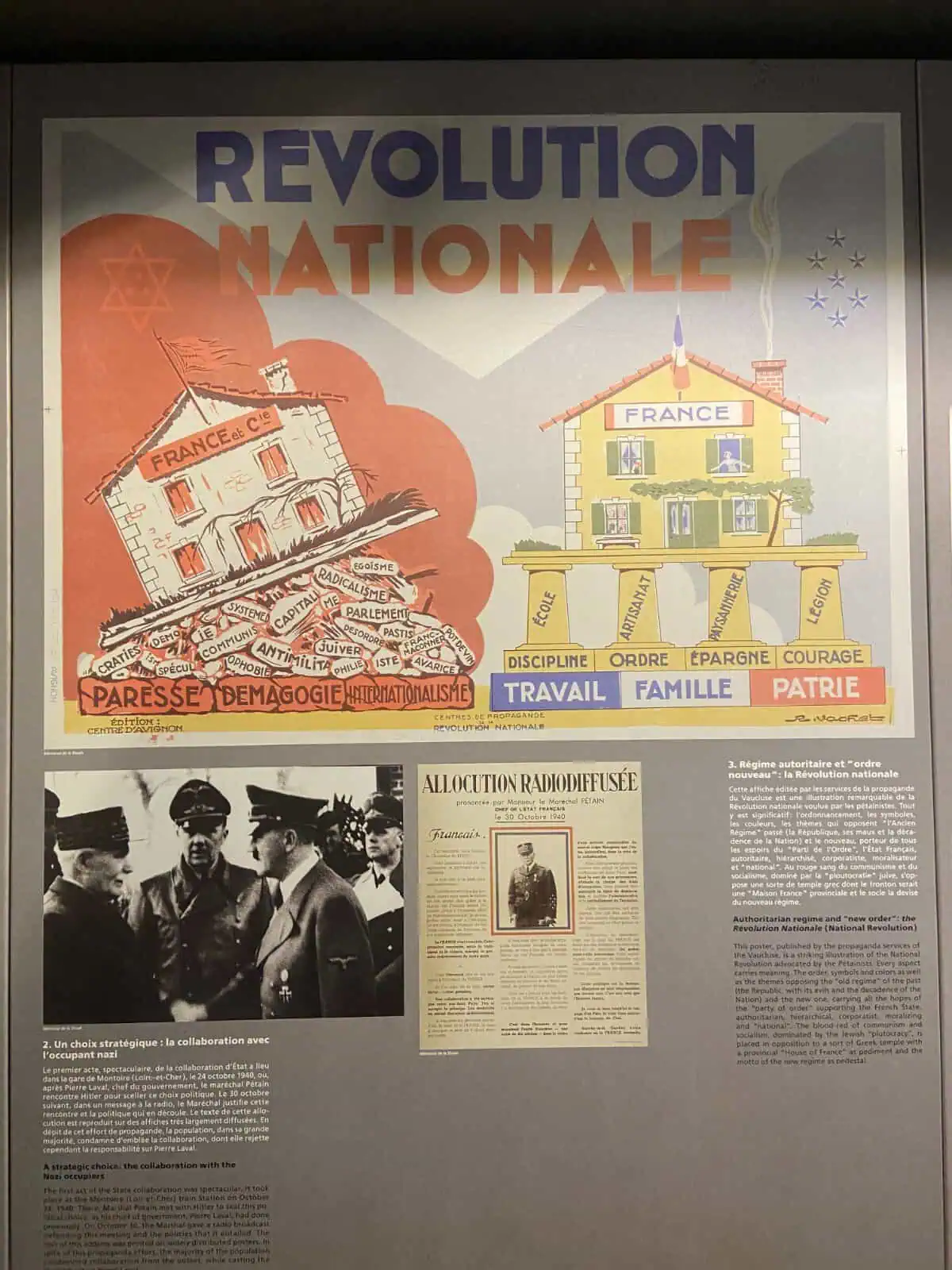
What you need to know to visit
All of the below information is current as of September 2024. Click here for the most up to date details.
- Camp des Milles is open to the public daily from 10am to 7pm. Note that the ticket counter closes at 5:30pm.
- They advise giving yourself three hours for your visit. That’s how long Colin and I were there, so I think it’s a good estimate.
- The full price adult ticket is €9.50. You can buy your ticket when you arrive. (They say you can buy it in advance online but that button isn’t currently working.)
- Your ticket includes an audioguide. There are also info boards to read in French and English.
- There is a small gift shop and cafeteria on site. When we were there, the cafeteria either wasn’t open or closed early, so maybe don’t depend on it.
- For accessibility, there are elevators and Camp des Milles can provide wheelchairs (subject to availability).
- You’ll go through security before entering the site, similar to airport security with a bag and body scanner.
How to get to Camp des Milles
Camp des Milles is just a 5-15 minute drive from Aix-en-Provence, as well as a quick drive from Marseille. There’s a parking lot across the street from the memorial; we had no trouble finding a spot (granted, we visited in February).
If you’re not driving, there’s also a convenient bus route from Aix. Click here for more driving and transit information.
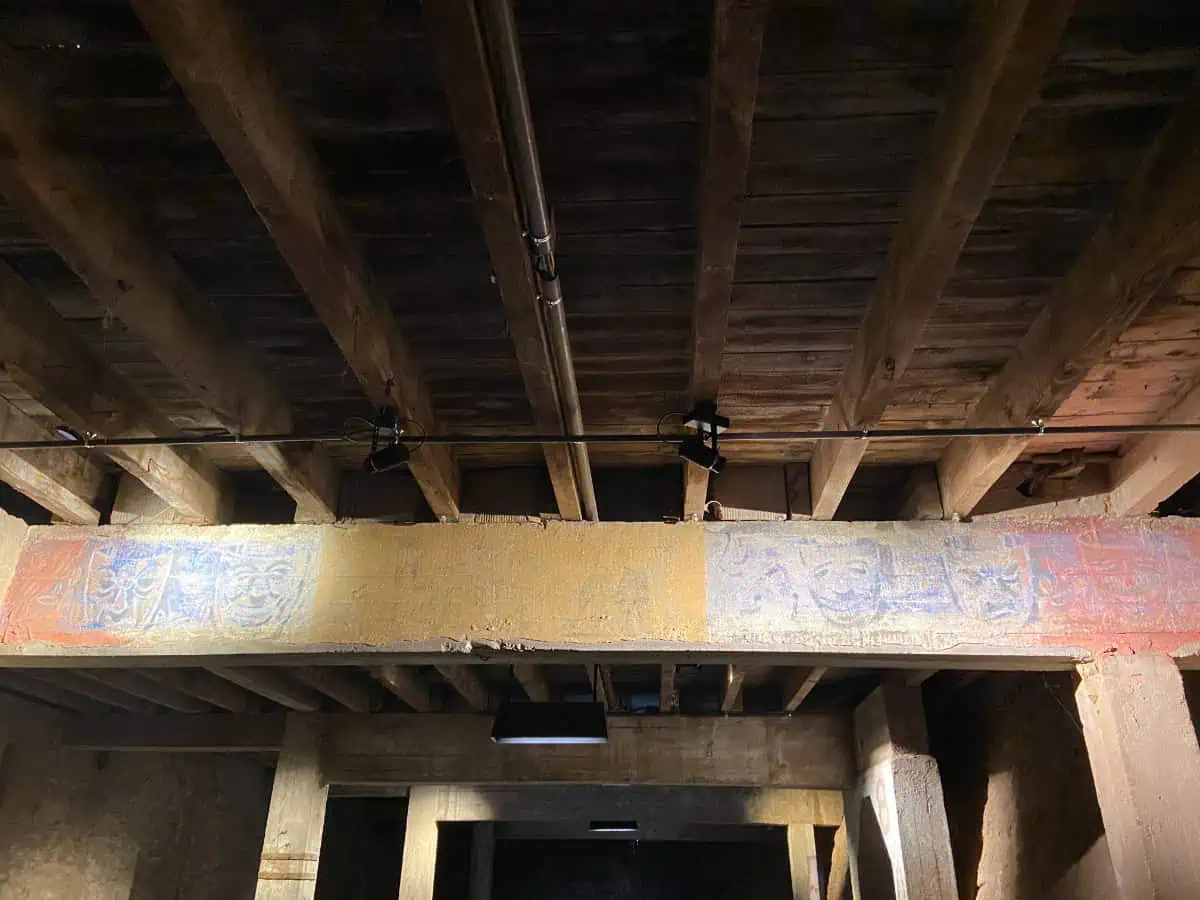
Review of our visit to the Memorial Site of Camp des Milles
After you pass through security and purchase your ticket, you’ll enter into a few different indoor areas of Camp des Milles that walk you through the history of the building, internment spaces and an area dedicated to reflection.
Afterwards you’ll move outside to view more memorial galleries, exhibits and artifacts.
In the first area, we learned about how the Nazis rose to power and began the Holocaust. I appreciated how the displays shared both the general facts but also personal accounts from individuals who experienced WWII firsthand.
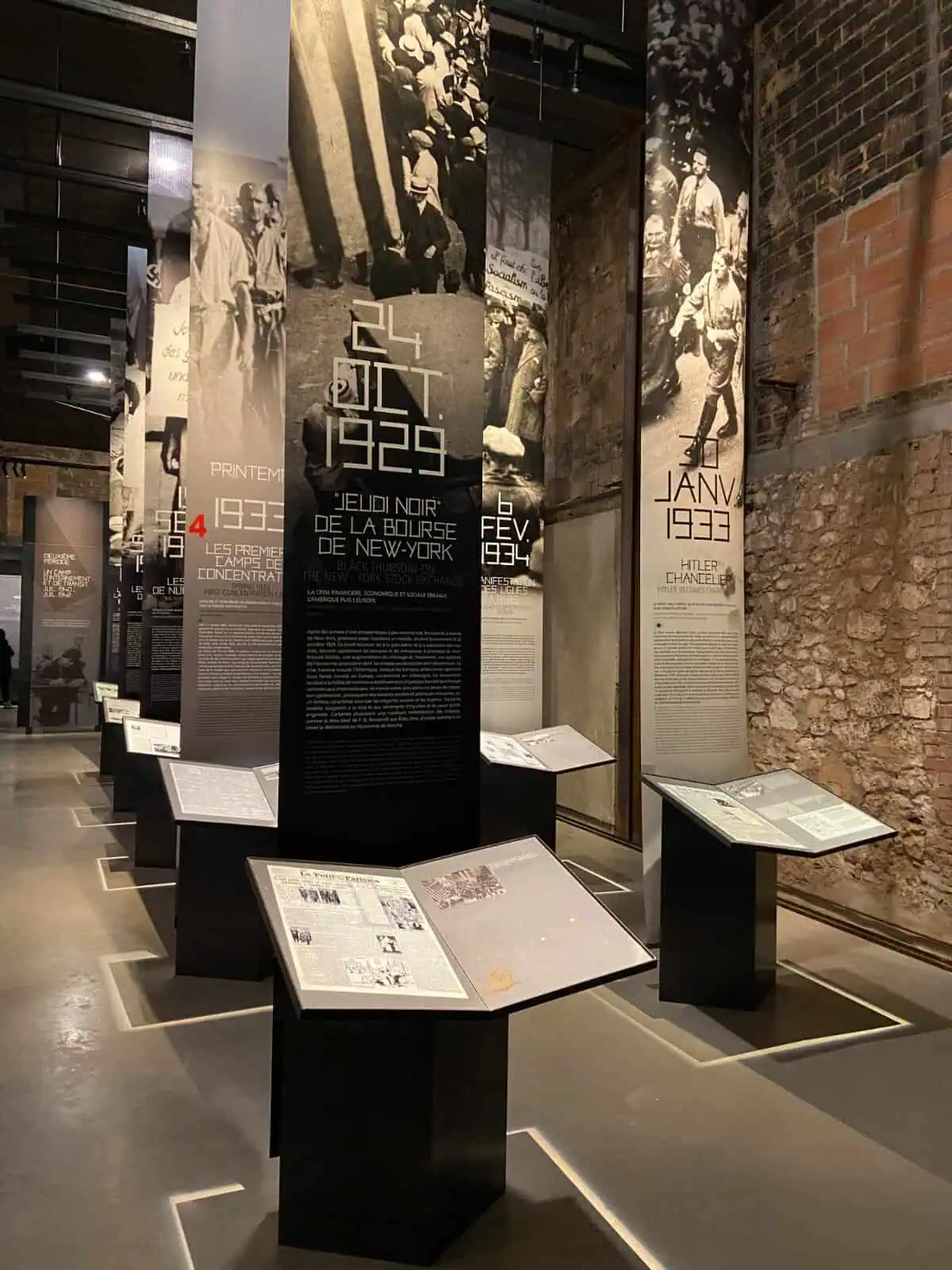
I really liked learning more about the Jewish resistance efforts and seeing some of the art that was created inside Camp des Milles. A lot of art was made inside the camp, beautifully displaying how creating art and preserving your humanity can be acts of resistance.
There was an incredible video showing the resistance effort in Provence and how Marseille essentially liberated themselves before the Allies arrived, despite attacks by the Nazis and their own government. I was really moved by it.
In the remembrance section, we walked through three levels of the building where people were interned. It was incredibly impactful to learn about the history and then see the human side of it face to face.
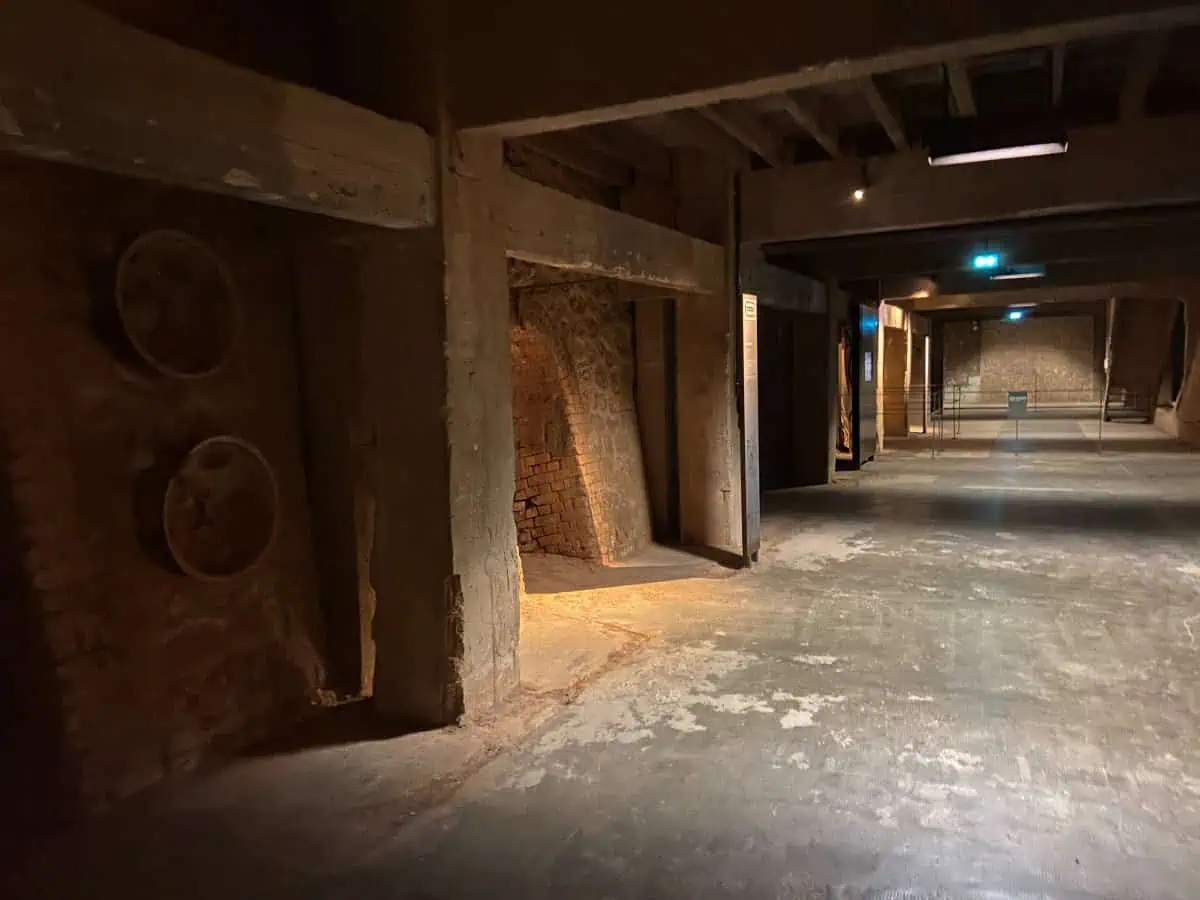


We saw carvings and paintings on the walls, the latrines they used, and even an impromptu theatre where they would put on comedy shows or other forms of entertainment.
One of the most difficult things to see was a window where the people inside the camp could watch the train leaving for Auschwitz. This window was also where some mothers jumped to their deaths.
The final indoor area was dedicated to reflection. Here we learned about the stages that lead to genocide and how to stop it (note that these sections are in French but there is an English audio guide for the movie, but it’s hard to hear).

The reflection section ends with The Wall of Righteous Acts – stories of people who were heroic in the midst of so much evil. I found this to be a really beautiful way to wrap up the memorial. It didn’t minimize the horrors by trying to end on a happy note but it was a great reminder of humanity’s capacity for kindness.
Following the indoor section, we went outside where we could see the Wagon of Remembrance (a memorial wagon car where the train to Auschwitz used to be), Path of the Deported (the path Jews would take to the train) and a painting gallery.
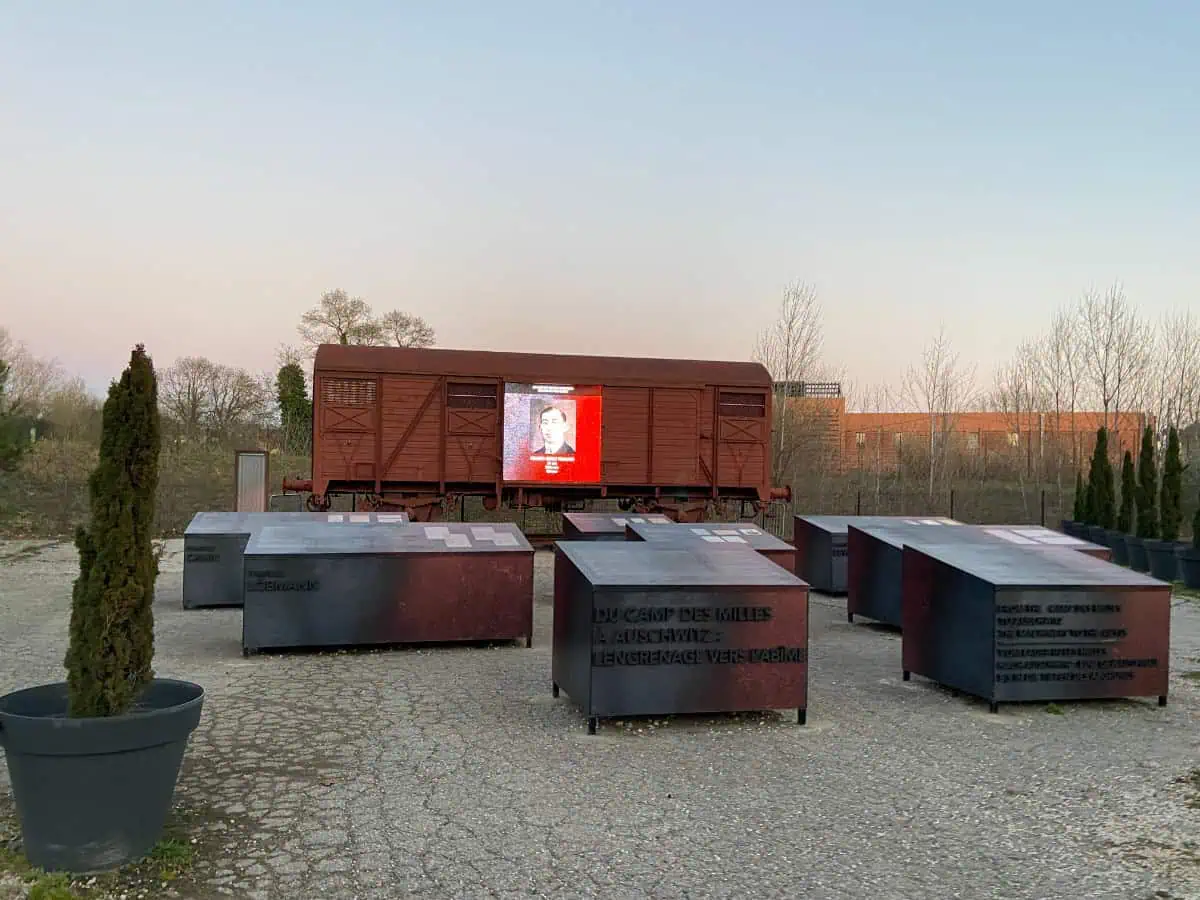
Unfortunately it was getting a little cold and close to closing hour by the time we made it outside, so we couldn’t stay too long. But we did get to briefly visit each of the memorial sections before ending our visit to Camp des Milles.
Where to stay in Aix-en-Provence
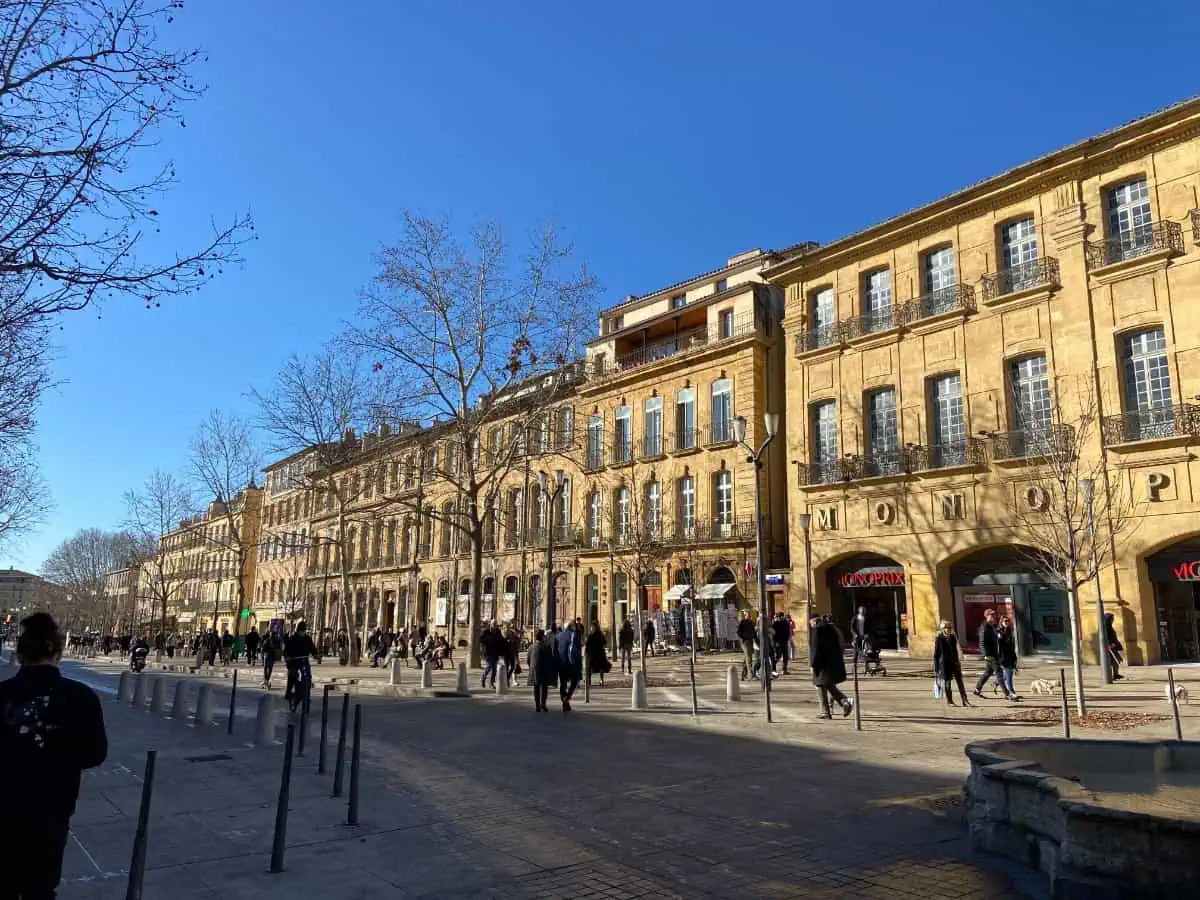
If you’re visiting Camp des Milles, it’s most convenient to stay in Aix-en-Provence, which is just a 5-15 minute drive away. You could also choose to stay in Marseille.
We actually visited Camp des Milles on our way from Avignon to Nice (it was a big Provence road trip day!) and so didn’t stay overnight in Aix. But here are some top-rated hotels:
- Historic budget hotel just out of town: Suite le Quervalat. Stay in an 18th Century cottage just a 10 minutes’ drive from Aix’s old town, with breakfast included.
- Stylish mid-range hotel in the best location: Maison Du Collectionneur. Check into a beautiful boutique hotel in the centre of Aix. The perfect blend of modern and historic.
- Splurge hotel with a stunning pool: Villa Saint-Ange. Enjoy Versailles-level luxury at this 18th Century villa with a pool and restaurant on-site.
Other things to do in Aix-en-Provence

Besides visiting Camp des Milles, here are a few other things to do while you’re in nearby Aix-en-Provence.
- Walk around the historic centre and eat calissons, Aix’s famous candy.
- Visit one of the Aix-en-Provence markets, such as the daily Place Richelme farmer’s market or the flower market at Place de l’Hotel de Ville.
- Check out incredible art at the Granet Museum, Fondation Vasarely, Pavillon Vendôme or Musée des Tapisseries.
Or check out one of these tours from Aix:
We only had a couple of hours in Aix before we planned to visit Camp des Milles. We enjoyed a fun brunch at Maison Nosh (definitely more of a North American vibe than a French one) and just strolling through town.
Compared to the Luberon villages of Gordes and Rousillon which we had visited earlier that day, Aix was a much bigger city. It was bustling, even for a weekday in February, and struck me as a cool place to live. I’d love to go back and experience more of Aix!
Wrapping up: Should you visit Camp des Milles Memorial?
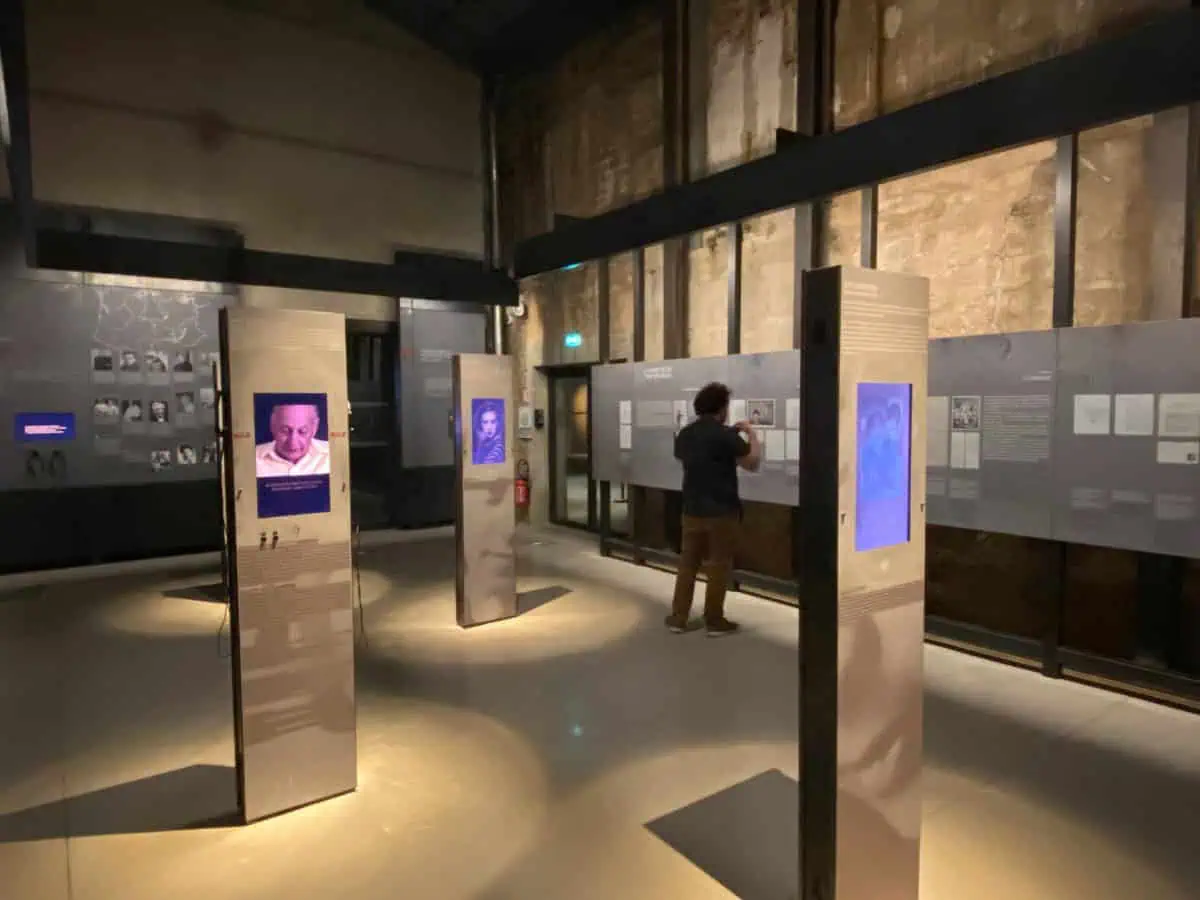
Yes, I absolutely think you should visit Camp des Milles while you’re in Aix-en-Provence or as part of a larger Provence trip. It’s the only camp of its kind in France that’s open to the public and an important part of French history.
I thought the memorial exhibition at Camp des Milles was very well done. I really enjoyed how it walked us through the site’s history, including its uses as a deportation and internment camp. They did a great job of balancing the wider WWII history with personal stories and real life artifacts from the camp.
The final section, Reflection, while largely in French was still very impactful for English-only speakers. And I liked that the site made use of their outdoor space and used that for more creative memorial exhibits.
The included audio guide was very informative, but never in a dry way. There was also a ton to read on the walls and plaques, as well as plenty of videos and visuals. As someone who usually gets bored in museums after an hour, Camp des Milles more than held my attention for our 3+ hour visit.
Provence is known for its cute villages and lavender fields. But it also has a dark past. Camp des Milles is an excellent place to learn about that past and honour the lives impacted and lost here.
I’d love to know: Will you be visiting Camp des Milles on your next Provence trip?



